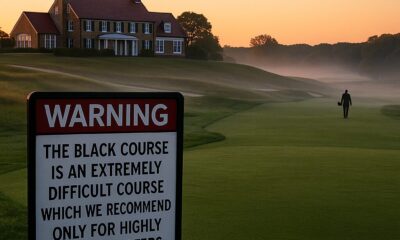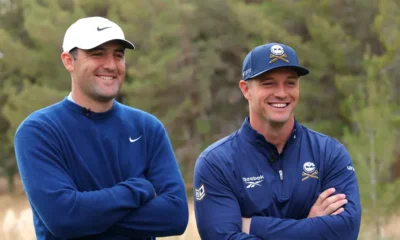Blog
5 Most Meaningful Golfers in 2021
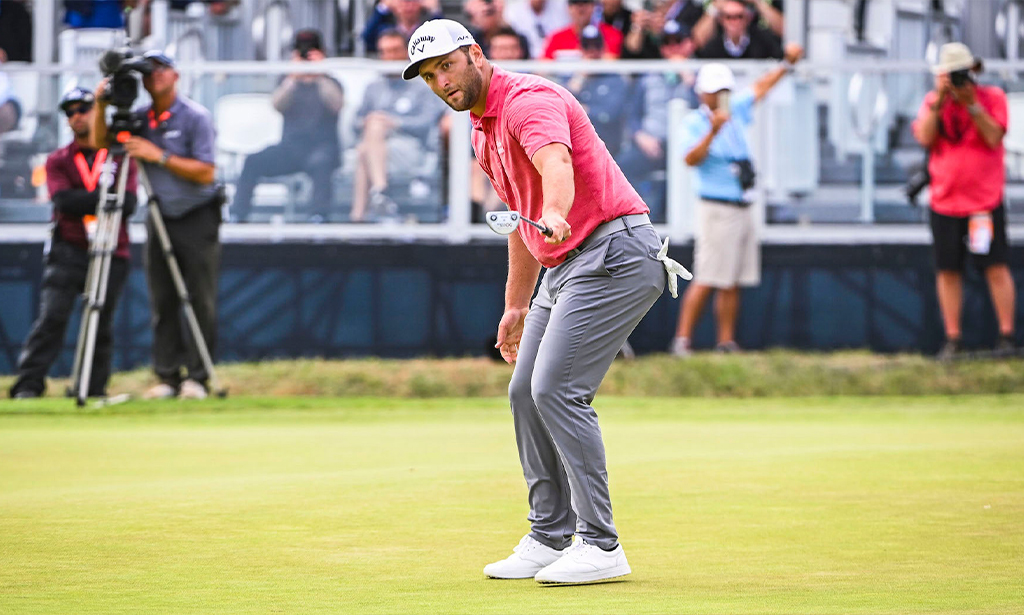
Looking back at 2021, we can’t believe it is almost over. It seems like the last twelve months have flown by, but that doesn’t mean it was uneventful in the slightest. The pandemic is still affecting every aspect of our daily lives from mandates to cancelled events we’ve been looking forward to for years.
The same is true for the world of golf. When Covid first came along, majors where rescheduled, some multiple times, and golf fans were left longing for any tidbit of golf news they could sink their teeth into.
But 2021 was different. So much has happened that it’s hard to believe it could fit all in one year. Not all of it was pretty, but it was quite entertaining to say the least. On the flipside, so many wonderful things happened as well. We got to watch some of our favorite players rise up to new challenges and unexpected winners showcase their talents.
One of our favorite things to do at the end of every year is to take a look back at these memorable moments and find the ones that affected us the most. In determining who belongs where on this year end list, we will be looking at more than just the wins a golfer racked up. Sure, you might feel differently about the choice made here, but that’s what we love about this sport. So many people can get different things out of every situation.
All in all, we wanted to put together a list that meant something for this year in golf. Something we could take a look back at years down the road and remember the talents that helped define 2021. It was very difficult as there were so many to choose from.
Here’s our list for the top five golfers from the last year:
1. Jon Rahm
This one seemed like a no-brainer for us. Easy day. His list of accomplishments is ridiculous, but even his win total — only that U.S. Open victory in June — belies how good he was. It’s important to note that Rahm led the Memorial Tournament in June by six before having to withdraw following Round 3 after testing positive for COVID-19. He also finished T1 at the Tour Championship if you look at who took the fewest strokes throughout that week and don’t factor in players’ starting scores.
Rahm’s 2.28 strokes gained was the best in the world in 2021, just ahead of Patrick Cantlay’s 2.14 and well ahead of Daniel Berger — who finished third — at 1.85. Rahm also had the highest percentage of top 10s (62%) across all events worldwide and the lowest cumulative score of the golfers who made the cut at all four major championships. At those four majors, he finished T5-T8-1-T3. He beat or tied 539 of 552 (97.6%) of golfers at the four most important events. And if all of that wasn’t enough, he was one of just three golfers to win more than a single point for Europe at the 2020 Ryder Cup at Whistling Straits.
2. Collin Morikawa
The only other lock for me. While his strokes-gained number was not as impressive as Rahm’s (Morikawa finished 10th in the world in strokes gained), he won a major, had the second-highest top-10 percentage behind Rahm and took the Race to Dubai by winning the DP World Tour Championship. He was also a nightmare for Europe at the Ryder Cup. Morikawa is a tremendous example of strokes gained not telling the entire story. According to Data Golf, even though he ranked 10th overall in strokes gained for the year, he ranked third when you look at the 95th percentile of players’ rounds. In other words, his best stuff was better than the best stuff of everyone other than Patrick Cantlay and Rahm.
3. Jordan Spieth
I know everyone will be shocked that I included Spieth, but his case is fairly airtight. He finished fourth in strokes gained on the year, won the Texas Open and legitimately mixed it up at both the Masters and Open Championship. He could have fairly easily won either one of those. Additionally, he accumulated the fifth-most OWGR points behind Morikawa, Rahm, Viktor Hovland and Sam Burns. You could have made a compelling argument that, for most of the first half of 2021, Spieth was once again the best golfer in the world.
4. Patrick Cantlay
This might surprise you, but Cantlay was actually difficult for me to include on here. He was not very good at the major championships (best finish was T15 at the U.S. Open), but he was very good everywhere else and won two big-time events at Memorial (although Rahm probably should have won) and that epic playoff at the BMW Championship over Bryson DeChambeau. Ultimately, the fact that he was the only golfer other than Rahm to top 2.0 strokes gained on the year won me over, but I strongly considered throwing Brooks Koepka or Louis Oosthuizen into this spot.
5. Hideki Matsuyama
Another player who won’t win any statistical wars but did win perhaps the two most meaningful tournament of the season. First, he became the first golfer from Asia to win the Masters in April, and then he won in his home country of Japan at the Zozo Championship in the fall. The rest of his year was fairly tepid — top-five finishes at the Olympics and in Memphis at the WGC-FedEx St. Jude Invitational — but any list of the best and most important golfers in 2021 has to have Matsuyama on it.
The toughest golfers to leave off the list were Louis Oosthuizen, Bryson DeChambeau, Brooks Koepka and Phil Mickelson. They all had interesting cases to make, but ultimately didn’t win enough, weren’t consistent enough or didn’t play enough high-quality golf throughout the year to warrant inclusion.
Mickelson is especially intriguing because I think when we look back on 2021, his PGA Championship victory will be one of the most memorable moments. But he was so bad the rest of the year that it made it impossible to include him. He lost strokes over the course of the entire 2020-21 PGA Tour season and did not rank in the top 150 in the world in strokes gained. He didn’t have another top 10 worldwide other than that PGA win, which somehow makes the PGA win even more impressive but also means that he falls short of making this list.
This article originally appeared on CBS Sports.
Blog
The Most Dramatic Final-Day Finishes in Major Sports Tournaments
Many sports have some nail bitting finishes. Robert Greenfield recaps some major final day finishes in sports history.
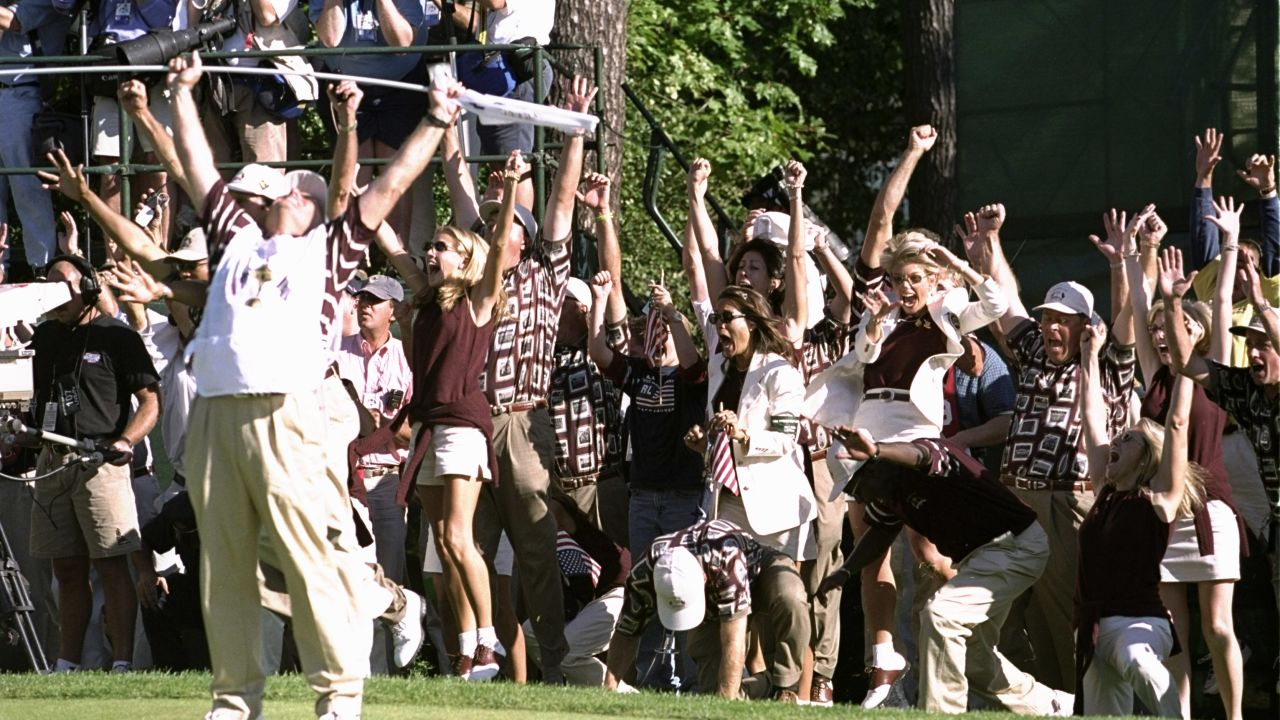
The final day of major sports tournaments often delivers an exhilarating end to the competition that keeps fans on the edge of their seats. There’s no better testament to the suspense and drama of sports than those last-minute turnarounds, nail-biting finishes, and underdog triumphs that define the beauty of competition. This article will take you on a thrilling journey through some of the most dramatic final-day finishes in major sports tournaments, reminding us all why we love sports in the first place.
-
- The Miracle of Istanbul – 2005 UEFA Champions League Final
The 2005 UEFA Champions League Final between Liverpool and AC Milan is etched in the annals of football history as one of the most dramatic comebacks ever witnessed. AC Milan, boasting a star-studded lineup, went into halftime with a seemingly unassailable 3-0 lead. However, Liverpool had other plans. In a six-minute spell after halftime, the Reds staged an incredible comeback to level the match at 3-3, eventually winning the game on penalties. The victory was a testament to the never-say-die spirit of Liverpool and the unpredictability of football.
-
- The “Shot Heard ‘Round the World” – 1951 National League Pennant Playoff
In baseball’s history, few moments match the drama of the 1951 National League Pennant Playoff. The New York Giants and the Brooklyn Dodgers were facing off in a three-game playoff to determine the National League champion. In the bottom of the ninth inning of the decisive third game, with the Giants trailing 4-2, Bobby Thomson hit a game-winning three-run homer off Dodgers pitcher Ralph Branca. This legendary moment, known as the “Shot Heard ‘Round the World,” is one of the most iconic in baseball history.
-
- The 1999 Ryder Cup “Battle of Brookline”
The 33rd Ryder Cup, held at The Country Club in Brookline, Massachusetts, saw one of the greatest comebacks in the history of golf. The United States trailed Europe 10-6 heading into the final day, but in a stunning display of determination and skill, the American team clawed back to win 14.5-13.5. The victory, known as the “Battle of Brookline,” is still celebrated as a pivotal moment in golf history.
-
- The 1980 “Miracle on Ice”
One of the most dramatic moments in the history of ice hockey came during the 1980 Winter Olympics. The heavily favored Soviet Union team was expected to sweep the gold, but the underdog United States team had different plans. In a game filled with tension and drama, the U.S. team defeated the Soviets 4-3 in a match now known as the “Miracle on Ice.” This victory is not only iconic in the sport of ice hockey but also a significant moment in American sports history.
- The 2019 Cricket World Cup Final
The final of the 2019 Cricket World Cup between England and New Zealand was filled with unprecedented drama and suspense. Both teams ended their innings tied on 241 runs, leading to a Super Over – cricket’s version of a tiebreaker. Incredibly, the Super Over also ended in a tie, with both teams scoring 15 runs. England was ultimately declared the winner on the basis of a boundary countback rule, marking their first-ever World Cup victory.
Conclusion
The unpredictability, suspense, and drama are what make sports so captivating. These dramatic final-day finishes remind us of the thrilling highs and lows that come with the world of competitive sports. As fans, we live for these moments, cherishing the unexpected triumphs and heartbreaking defeats. The next time you find yourself watching the final day of a major sports tournament, remember these historic moments and brace yourself for the potential drama that could unfold.
Blog
Weather and the Game: The Undeniable Influence of Elements on Championship Outcomes
Learn how weather affects different championship outcomes.
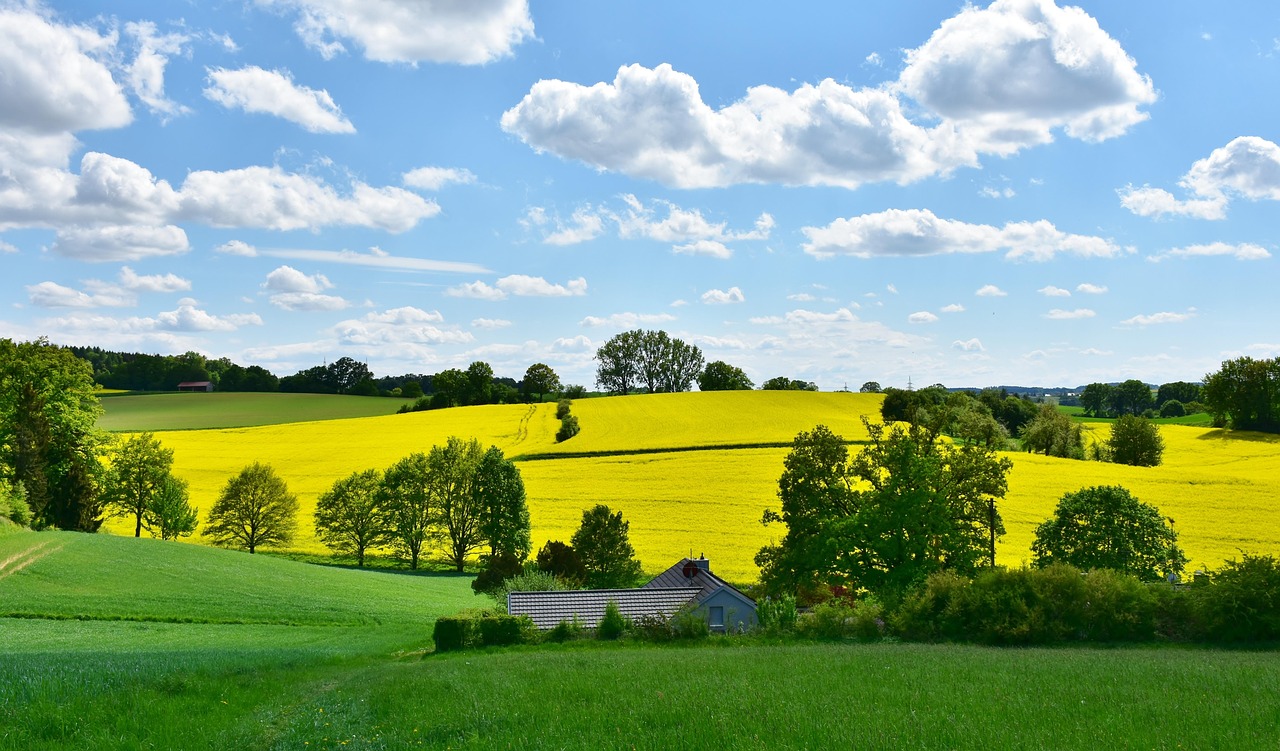
Introduction
As a sports enthusiast, you might have noticed that weather plays a significant role in sporting events, particularly in championships. From the power of a baseball pitch to the course of a golf ball, from the strength of a football kick to the stride of a marathon runner – the elements can influence each of these and more. In this article, we delve into the fascinating intersection of meteorology and sports, examining how weather conditions can make or break a championship game.
The Impact of Weather on Different Sports
Whether it’s football, baseball, golf, tennis, or marathon, each sport faces unique challenges when it comes to weather. Let’s delve into the specifics:
Football and Weather Elements
Football is a sport that’s played in almost all weather conditions except for severe ones like lightning storms. However, weather elements have a significant impact on the game.
-
- Rain: A wet field makes the ball slippery, impacting players’ ability to handle, pass, or kick the ball accurately. Rain can also make the field muddy, affecting the players’ ability to move swiftly.
- Wind: Strong wind can alter the trajectory of the ball, affecting passes and kicks.
- Cold: Extremely cold temperatures can affect players’ physical performance and endurance, while also making the ball harder and more challenging to catch.
Baseball and Weather Elements
Baseball is another sport where weather conditions can significantly influence the outcome.
-
- Wind: The direction and speed of the wind can affect the trajectory and distance a baseball travels.
- Humidity: High humidity can make the ball denser, potentially reducing its bounce and speed.
- Temperature: Low temperatures can make the ball harder, affecting its bounce and the players’ ability to grip and hit it effectively.
Golf, Tennis, and Marathons
Weather conditions play an equally crucial role in golf, tennis, and marathons.
-
- Wind: In golf, the wind can alter the ball’s direction and distance. In tennis, wind can affect ball control, altering serves and volleys.
- Temperature: Extreme heat can affect a marathon runner’s performance significantly, leading to dehydration and exhaustion.
- Rain: In golf, a wet course can slow down the ball, while in tennis, a wet court can make the ball bounce irregularly.
Case Studies: Weather Influencing Championship Outcomes
This section presents some examples of games where weather conditions significantly influenced the outcome.
- The “Ice Bowl” (1967): The NFL Championship game between the Green Bay Packers and the Dallas Cowboys, often referred to as the “Ice Bowl,” witnessed one of the coldest conditions in NFL history, affecting players’ performance and the final outcome.
- The “Windy City” World Series (1945): The World Series game between the Chicago Cubs and Detroit Tigers was so affected by the wind that it changed the trajectory of the baseball multiple times, influencing the game’s final score.
- Wimbledon Championships (2019): The final match between Novak Djokovic and Roger Federer was played with the Centre Court’s roof closed due to rain, limiting the natural elements’ effects and perhaps altering the match’s dynamics.
Conclusion
The impact of weather on sports is an exciting field of study, revealing how the natural elements influence games and championships. From altering the trajectory of a ball to affecting a player’s physical performance, weather can indeed be a game-changer. As fans and enthusiasts, understanding these influences can add another layer of excitement and anticipation to our favorite sports.
So the next time you attend or watch a game, remember to check the weather forecast. It might just give you a sneak peek into the game’s possible outcome!
Blog
The Unofficial Rules of Golf: A Gentleman’s Guide to Not Being Judge Smails
The official rulebook is thicker than a dictionary and twice as boring. Let’s talk about the rules that really matter on the course: how to have fun, respect the game, and not be a stick-in-the-mud. Hint: It involves less plaid and more cosmic harmony.
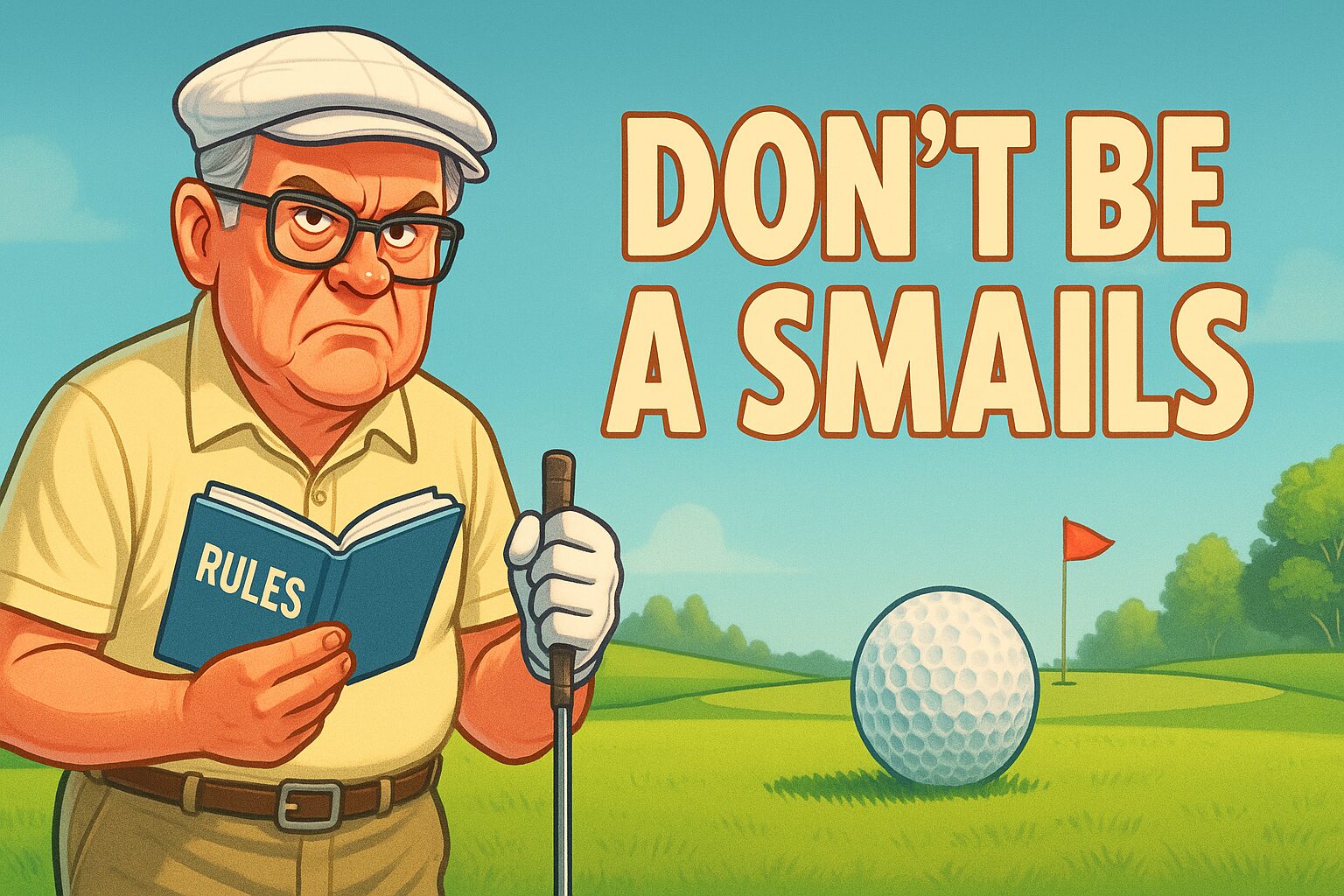
You’ve seen him. I’ve seen him. The guy who quotes the USGA rulebook like it’s scripture. He’ll happily tell you your ball moved a quarter of an inch when you addressed it, costing you a penalty stroke. He’s got a plumb bob for a three-foot putt and the personality of a rake. He is, in spirit, Judge Smails. And let’s be honest, nobody wants to be Judge Smails.
The real game of golf, the one that keeps us coming back, isn’t played by those rules. It’s played by a higher law. An unwritten code of conduct that’s all about flow, friendship, and the pursuit of that one perfect shot. It’s a gentleman’s agreement with the universe.
So, let’s talk about the rules that actually matter.
1. The Cosmic Readjustment (aka The Mulligan). Your first tee shot is a mess. It goes sideways into the woods where the gophers play. The Smails of the world would tell you to take a penalty and hack it out. I say the universe is just getting warmed up. The “breakfast ball” isn’t cheating; it’s a course correction. It’s an agreement among friends that a round of golf shouldn’t be ruined before it even begins. Take another. The Dalai Lama would want you to.
2. The Art of Flow (aka Pace of Play). This isn’t about rushing. Rushing is a fool’s game. This is about flow. It’s about being ready to hit when it’s your turn. It’s about watching your friend’s shot so you can help them find it. It’s about moving with a purpose, not like you’re searching for your car keys in a dark parking lot. Don’t be the anchor that drags the whole group down. See the line, hit the ball, walk on. Nanananana.
3. The Circle of Friendship (aka Gimmes). Is the putt inside the leather? Good enough. Pick it up. Life is too short to watch your buddies sweat over an 18-inch putt for a double bogey. A gimme isn’t just a time-saver; it’s a gesture of goodwill. It says, “I trust you, you trust me, and neither of us needs the anxiety of missing this tiny putt.” It’s good for the karma, and even better for the pace of play.
4. The Final Verdict (aka The 19th Hole). The most important rule is this: no matter what happened out there, you shake hands on the 18th green and settle things over a cold drink at the 19th. The guy who shot an 82 and the guy who shot a 102 are equals in the clubhouse. The stories get better, the putts get longer, and the bad shots fade away. This is where the real game is won.
So, forget about the fine print. Focus on the feeling. Be a good playing partner, enjoy the walk, and don’t be a Smails. You’ll find your score starts to take care of itself.
Did this speak to your soul? Pass it along to your foursome to make sure everyone is on the same page. For more deep thoughts from the fairway, be sure to follow us on social media. It’s the right thing to do.
-

 Product Review6 years ago
Product Review6 years agoThe Perfect Practice Putting Mat Review by Jason Tenzer
-

 Blog4 years ago
Blog4 years agoLoophole Rule Offers PGA Tour Pros a Mulligan
-

 Blog4 years ago
Blog4 years ago2021 Buyer’s Guide: The Top 10 Value Golf Balls For Distance & Feel
-

 Blog5 years ago
Blog5 years agoGolf Marriage Counselor
-

 Blog6 years ago
Blog6 years ago9 Biggest Chokes Of The Past Decade
-

 Product Review6 years ago
Product Review6 years agoTHE ADJUSTABLE IRONS: WALKING STICKS GOLF CLUBS
-

 Blog4 years ago
Blog4 years agoWhat Your Golf Clubs Say About You
-

 Equipment6 years ago
Equipment6 years agoOHK Sports Interview by Jason Tenzer





